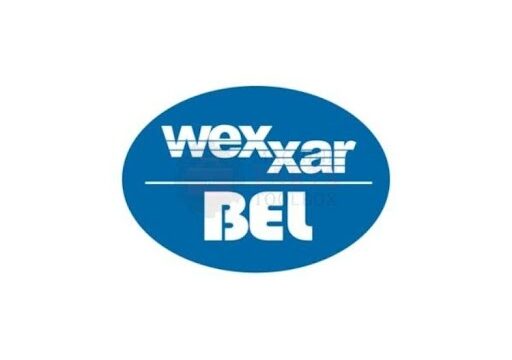In today’s increasingly environmentally conscious world, transparent climate reporting has emerged as a critical component of corporate responsibility. As businesses face growing pressure from stakeholders, consumers, and regulatory bodies to adopt sustainable practices, effective climate reporting provides a means to demonstrate accountability and commitment to environmental stewardship. This guide explores how transparent climate reporting drives corporate responsibility and outlines best practices for businesses looking to enhance their sustainability efforts.
The Importance of Transparent Climate Reporting
Building Trust with Stakeholders
Transparent climate reporting fosters trust between businesses and their stakeholders, including investors, customers, employees, and the communities in which they operate. Stakeholders are more likely to support companies that openly share information about their environmental impact and sustainability initiatives. By providing clear and accessible data, businesses can demonstrate their commitment to reducing their carbon footprint and addressing climate change.
Enhancing Reputation and Brand Value
In an era where consumers prioritise sustainability, transparent climate reporting can enhance a company’s reputation and brand value. Companies that actively communicate their environmental efforts are more likely to attract environmentally conscious consumers. Furthermore, a strong reputation for sustainability can differentiate a business in a competitive market, potentially leading to increased customer loyalty and higher sales.
Complying with Regulatory Requirements
As governments worldwide implement stricter environmental regulations, transparent climate reporting is essential for compliance. Companies that fail to meet these requirements may face legal repercussions and damage to their reputation. By adopting robust climate reporting practices, businesses can ensure they meet regulatory standards while avoiding potential penalties. Moreover, proactive reporting can position companies favourably in the eyes of regulators and policymakers.
Key Components of Effective Climate Reporting
Setting Clear Goals and Objectives
Effective climate reporting begins with establishing clear goals and objectives. Companies should outline their sustainability targets, such as reducing greenhouse gas emissions, transitioning to renewable energy sources, or achieving carbon neutrality. Setting measurable targets allows businesses to track progress and hold themselves accountable.
Measuring and Reporting Emissions
Accurate measurement of greenhouse gas emissions is a crucial aspect of climate reporting. Companies should adopt standardised methodologies, such as the Greenhouse Gas Protocol, to assess their emissions across all operations. This includes Scope 1 (direct emissions), Scope 2 (indirect emissions from purchased electricity), and Scope 3 (indirect emissions from the value chain). Transparent reporting of these emissions not only showcases a company’s commitment to sustainability but also provides valuable insights for improvement.
Engaging Stakeholders in the Reporting Process
Engaging stakeholders in the climate reporting process is vital for transparency and credibility. Companies should seek feedback from investors, employees, and customers to understand their expectations and concerns regarding sustainability. This engagement can help businesses identify key areas for improvement and enhance their reporting efforts. Furthermore, involving stakeholders in the process fosters a sense of shared responsibility for environmental outcomes.
Utilising Technology and Data Analytics
Technology plays a pivotal role in enhancing climate reporting. Businesses can leverage data analytics tools to collect, analyse, and report emissions data more effectively. Advanced software solutions can streamline the reporting process, making it easier to track progress toward sustainability goals. Additionally, technologies such as blockchain can enhance transparency by providing immutable records of emissions data.
Best Practices for Transparent Climate Reporting
Follow Established Frameworks
Businesses should adhere to established reporting frameworks, such as the Global Reporting Initiative (GRI) or the Task Force on Climate-related Financial Disclosures (TCFD). These frameworks provide guidelines for transparent and standardised reporting, ensuring that companies convey relevant information to stakeholders in a consistent manner.
Regularly Update and Review Reports
Transparent climate reporting is an ongoing process that requires regular updates and reviews. Companies should establish a schedule for updating their sustainability reports to reflect changes in operations, goals, and industry standards. Regularly reviewing reports also allows businesses to assess their progress and make necessary adjustments to their sustainability strategies.
Communicate Achievements and Challenges
Transparency in climate reporting involves not only communicating successes but also acknowledging challenges and areas for improvement. Companies should be candid about the obstacles they face in achieving their sustainability goals and outline strategies for overcoming these challenges. This honesty enhances credibility and fosters trust with stakeholders.
Promote Internal Culture of Sustainability
Fostering an internal culture of sustainability is essential for effective climate reporting. Companies should engage employees at all levels in sustainability initiatives, providing training and resources to empower them to contribute to environmental goals. By promoting a culture of sustainability, businesses can enhance their reporting efforts and achieve meaningful results.
Conclusion
Transparent climate reporting is an essential driver of corporate responsibility in today’s business landscape. By adopting effective reporting practices, companies can build trust with stakeholders, enhance their reputation, and comply with regulatory requirements. Setting clear goals, measuring emissions accurately, and engaging stakeholders are key components of successful climate reporting. As businesses continue to navigate the challenges of climate change, transparent reporting will play a pivotal role in shaping a sustainable future. By committing to transparency, companies not only demonstrate their dedication to environmental stewardship but also position themselves as leaders in the transition to a more sustainable economy.






Most Commented Posts